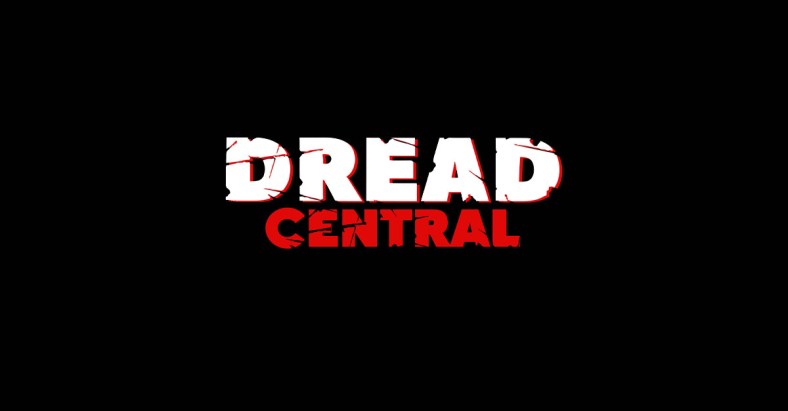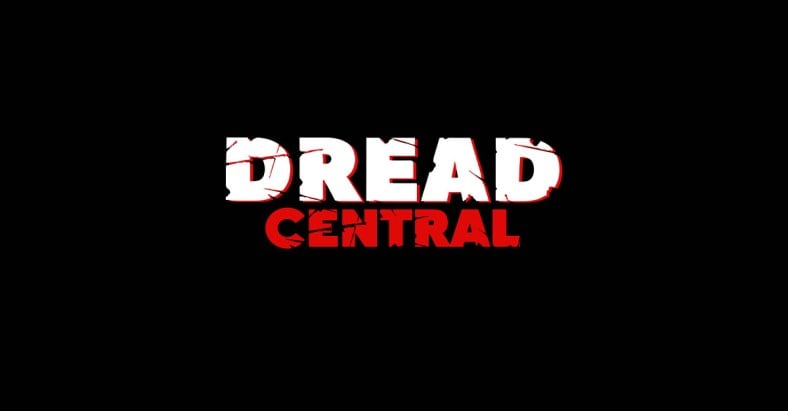Exclusive: Composer Samuel Joseph Smythe Brings Back the 1980s Classic Synth Sounds for THE CALL

What do you get when you pair horror icons Lin Shaye (Insidious) and Tobin Bell (SAW franchise) with a prank gone wrong? Nothing good to say the least. This is the premise for Cinedigm’s latest horror film, The Call, which is being produced by Final Destination creator Jeffrey Reddick and directed by Timothy Woodward Jr. (Gangster Land).
Synopsis:
After a tragic accident, a group of small-town friends must survive the night in the home of a sinister couple.
Alongside Shaye and Bell, the film stars Chester Rushing (Stranger Things), Erin Sanders (Big Time Rush), Mike Manning (Teen Wolf), and Judd Lormand (SEAL Team).
Adding to the terrifying tale is the score by Samuel Joseph Smythe. Sam is no stranger to the horror genre, also scoring Timothy Woodward Jr.’s The Final Wish starring Tony Todd (Candyman). In the exclusive interview below, Sam talks about being inspired by classic synth sounds from 1980s horror films, especially Nightmare on Elm Street. The Call opens exclusively in theaters and drive-ins nationwide tomorrow (October 2nd). Enjoy!

Dread Central: How did you become involved with The Call? What was the initial appeal for the project?
Samuel Joseph Smythe: This is the sixth film I’ve scored for director Timothy Woodward Jr. I had a great time scoring his last horror film, The Final Wish, 2 years ago. So when he approached me with another horror film I couldn’t wait to get started. In our first conversations about the film, he talked about how it has a real 1980s horror flick vibe and we immediately started naming some of our favorite horror films from that era. When he mentioned Nightmare on Elm Street I knew exactly what he was going for. Over a decade ago I studied film scoring from that film’s composer, Charles Bernstein, and I got to know some of the scoring techniques and synth sounds he used in it, so I knew I’d have a lot of fun weaving that into my horror score.
DC: How would you describe your score for the film?
SJS: Since this film is set in the 1980s the director and I really wanted to keep that feel using some classic synth sounds from horror films of that era. I created a lot of synth sounds that were a basis for the score’s overall tone. For synth fans this meant a lot of Roland Jupiter-8, Fairlight and Synclavier synths, classics from the 80s. Legendary director and composer John Carpenter was a real pioneer from this era that brought synths into horror films and I studied his sounds to really dial in the tone for The Call.
We also came up with the idea of using a little girl’s voice singing a creepy melody for the little girl you see in the trailer. When I was studying under Charles Bernstein in 2007 he talked about using his own voice manipulated through a synth to create a high female sounding voice for a melody in Nightmare on Elm Street. While I didn’t use my own voice, I found a friend who has a 4-year-old niece and he was able to get her to sing the notes from the melody which I then manipulated and used throughout the score.
While I did use a lot of 80s synths to give the film that dated feeling, my scores always have my own sound which is oftentimes based in an orchestral setting. I love a good string melody and I use melodic themes to create a dramatic emotional connection with the characters in the film. Having written and recorded many orchestral scores throughout my career I have found my voice. And with horror films I always have the opportunity to use an orchestra in a very non-standard way. Lots of creepy effects can be achieved from instruments when they’re all played in what might seem like the “wrong way” to play them. Having studied under and worked for legendary horror film composer Chris Young back in 2008, I learned a lot of his classic techniques of using orchestral instruments in abstract ways that I still use to this day.
DC: Timothy Woodward Jr. directed The Call. You also worked with him on another horror film, The Final Wish. How involved was Timothy with the sounds of the scores? Does he give you a lot of freedom or does he have a pretty specific vision for how his films sound?
SJS: Timothy is one of the most creatively freeing directors I’ve worked with. He really gives me the opportunity to help define the film’s story through the music. At the start of scoring we discussed a bit of the film’s classic 80s synth vibe and the use of a little girl’s voice for a little girl character. However, as far as defining the specifics of how to score each scene, he really lets me freely use my own creative instincts.

DC: You have worked in many different film genres. Do you think horror is more difficult than other genres? Because in horror, the audience relies on you more to let them know when something bad is about to happen.
SJS: I love horror scoring for this reason. There’s really an opportunity to tap into someone’s deep, dark emotions to insight fear. For me, this comes naturally in my creative scoring process because I will often use my initial reactions to watching a scene for the first time to really capture the fundamental fears we all have within us. With horror scoring, it’s all about capturing that fear in the moment so the score can’t give away too much of what’s about to happen on the screen but must stay in the moment so when those really scary moments do happen, your deep fear comes out.
DC: Did you watch any other horror projects before starting work on The Call to get inspiration?
SJS: Yes. While I know a lot of horror films from all eras, for this project I wanted to make sure I have that 1980s horror flick vibe. So I watched Nightmare on Elm Street, Halloween (I know, it’s from the late 70s, but still, John Carpenter really defined the synth sounds that were used in horror films in the 80s) and Child’s Play.
DC: Just from watching the trailer, there seems to be a lot of jump scares in the film. How do you approach those jump scenes?
SJS: Fear not, there’s more than jump scares in the film! When I watch a film down for the first time I use my initial reactions to really try and capture the fear the audience will experience from just viewing what’s on the screen. The score is there to help highlight those instinctive fears to what you’re experiencing by using music to bring out those emotions. Through scoring I’ve learned that nothing looks big unless it’s next to something small. So for jump scenes specifically, this means nothing is scary unless it’s next to something that’s not scary. You can’t make someone “jump” unless they’re sitting comfortably. So I like to settle the audience into some slight sense of safety in the moment, so that when the jump happens it’s a complete surprise and that safety turns into total terror.
DC: Were there any specific challenges with composing The Call? If so, what were they?
SJS: Time. Through the film’s production and post-production there were many elements that kept me from starting the score early on in the process. However, I’ve learned to really use that constraint to my favor by not overthinking every note of the score. Those initial reactions to seeing the film for the first time are incredibly valuable to scoring a film quickly.
DC: You have scored a lot of horror, but you have also worked on a lot of big video games such as Star Wars: Battlefront II. How different is scoring the two? What would be your ideal game to score?
SJS: I write music of all types for a wide variety of projects including many big video games. While Star Wars games and horror films are very different genres of entertainment, the music always tells a story. Whether it be light comedy, frightening horror, epic drama, heart-warming romance, etc., the music must always tell a story by creating an emotional connection to what you’re experiencing. So in this way the creative process is similar.
However, films are viewed in linear form. When you watch a film the sequence of scenes and story are the same every time you view it. In video games this concept does not really exist. Each gamer’s experience of viewing the game is completely different every time it’s played. So the music must be interactive and be able to adapt to what’s going on. This means a lot of the music is broken down into elements that, for example, can be repeated based on the gamer’s time spent on a specific task, seamlessly transition you from one part of the game to another or score a small movie that plays when a task is completed.
My ideal game to score (hear me out) would be a Harry Potter-style game that’s all about childlike magic. I know this is completely different from horror or epic Star Wars music but when I heard John Williams’ score for Harry Potter and the Sorcerer’s Stone when I was in high school, I knew I wanted to be a film composer. This music touches on your most inner childlike emotions and captured my imagination as soon as I heard it. So I would love to write that style of music with a full orchestra for a game someday. (Game devs: call me!)
DC: Are you personally a fan of horror? If so, what are some of your favorite horror films?
SJS: I am. When I was 13, I saw my first horror film: Psycho. I became obsessed with Alfred Hitchcock and set about watching every film he made. While Hitchcock’s films aren’t really horror films by today’s standards, Bernard Herrmann’s scores for his films taught me so much as a youngster about frightening musical storytelling which is a fundamental part of my sound to this day. Then there was Poltergeist. When I saw that film, I knew I wanted to write horror music. Such a great film, such a brilliant score. My score for The Final Wish was really influenced by Jerry Goldsmith’s music for this film. Next is The Exorcism of Emily Rose. The thrill and fright of a demon-possessed human really came out in Chris Young’s score through his use of an orchestra in non-standard ways. I love how the film gives you that sense of safety for a while and then sheer terror when the possession comes out.

Are you excited to check out The Call? What did you think of our exclusive interview with Samuel Joseph Smythe? Let us know in the comments below or on Facebook, Twitter, or Instagram! You can also carry on the convo with me personally on Twitter @josh_millican.
Categorized:Interviews News

